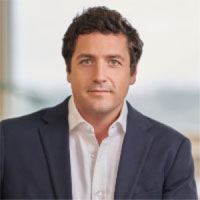Hospital At Home: Empowering Patients to Heal Remotely
Search For Schools
When you click on a sponsoring school or program advertised on our site, or fill out a form to request information from a sponsoring school, we may earn a commission. View our advertising disclosure for more details.
“We can monitor patients remotely and track their progress. We can assess their response to treatment and intervene early if need be. We leverage real time data integrated into technology solutions to change how we deliver care.”
Mert Aral, MD, Chief Medical Officer at Huma
Traditionally, convalescence following acute medical treatment or surgery has been synonymous with extended hospital stays, where patients are monitored and cared for by medical professionals until deemed safe to return home. This approach, while thorough, often places significant strain on healthcare facilities and can isolate patients from their comfortable home environments.
However, with advancements in medical technology and telehealth, an innovative model known as hospital at home has emerged, allowing patients to receive hospital-level care in the familiarity and comfort of their own homes, blending professional healthcare with the therapeutic benefits of being in one’s personal space.
This shift signifies a monumental transformation in patient care and aligns with a more patient-centric healthcare philosophy, offering a tailored and potentially more effective recovery process: “We can monitor patients remotely and track their progress. We can assess their response to treatment and intervene early if need be,” explains Dr. Mert Aral, chief medical officer at Huma, a remote patient monitor healthcare company. “We leverage real-time data integrated into technology solutions to change how we deliver care.”
Remote patient monitoring and the concept of hospital at home is not new. Researchers and physicians have been exploring the idea since 1990. However, progress has accelerated as technology becomes more ubiquitous and easier to use. The Covid-19 pandemic also accelerated adoption and integration as hospitals were at capacity or patients strongly desired to be at home. “It is something that we all need to we all need to embrace, both as patients as well as providers. It’s a bit of a mind shift, but it is the future. I believe it’s going to transform the way that healthcare is delivered. As much as possible, we will have a more digital-first healthcare approach from the comfort of patients’ homes,” says Dr. Aral.
More and more healthcare systems are recognizing its value and incorporating it into their service offerings. This shift is propelled by the growing evidence of its efficacy, medical technologies enabling remote care advancement, and an increasing consumer demand for personalized and convenient healthcare solutions. The advantages extend beyond just patient comfort. It represents a more cost-effective model for healthcare delivery, reducing the strain on hospital resources and potentially decreasing healthcare costs for providers and patients.
Continue reading to learn how hospital at home can improve patient outcomes, support providers in delivering care, and provide early detection.
Meet The Expert: Mert Aral, MD

Dr. Mert Aral is the chief medical officer at Huma, a global health tech company revolutionizing healthcare through digital-first solutions and proactive patient monitoring. He is also a clinician focusing on cardiology, research, and health technology. His dedication to patient care and safety and his commitment to enhancing patient outcomes through clinically led development underscore his commitment to advancing healthcare practices.
Dr. Aral has pioneered initiatives that make heart disease prevention more personalized and accessible. His strategic leadership and innovative approach have shaped the healthcare landscape and established him as a key figure in bridging the digital divide for improved patient diversity.
Hospital At Home Can Improve Patient Outcomes
Hospital at home has been shown to improve patient outcomes in various ways. By allowing patients to recover in their homes, they are less likely to develop hospital-acquired infections or experience complications from being confined to a hospital bed for extended periods. This model also allows patients to receive personalized care and support from their loved ones, promoting emotional well-being and potentially accelerating the healing process.
With remote patient monitoring and real-time data analysis, healthcare providers can intervene early if any issues arise, leading to more timely and effective treatment. “We have demonstrated for a very long time, across multiple use cases and therapeutic areas, that it can improve patient outcomes. That has led to our regulatory approvals,” explains Dr. Aral. “We have over 50 peer-reviewed publications across different indications where hospital-at-home technologies and remote patient monitoring improve clinical outcomes, reduce mortality, and increase clinical capacity.”
A 2021 review of nine randomized clinical trial studies published in the Journal of American Medical Association Network Open found that the 959 adult patients with a chronic disease receiving hospital-at-home care had an average length of treatment of 5.4 days longer than in-hospital patients and similar mortality risk. However, they also had a lower risk for readmission by 26 percent and a lower risk for long-term care admission relative to the in-hospital group. Patients who received hospital-at-home care also had lower depression and anxiety scores than patients receiving in-hospital care.
Hospital at Home Supporting Providers to Deliver Better Care
By utilizing remote patient monitoring and telehealth, providers can deliver care more efficiently and effectively while reducing their workload in a traditional hospital setting. This model also allows for better collaboration and communication among the healthcare team and easier access to patient data and medical records.
However, utilizing new technology and vast amounts of data can be overwhelming. Dr. Aral’s company, Huma, has found an innovative way to tackle this problem. “We learned that technology alone is not enough. Providers are already stretched, overworked, and under-resourced. They don’t have the time or the capacity to look at all of this data and act on it. So we have deployed our own nurse monitoring staff,” he explains. “Once the technology has been implemented at a hospital, our nurse navigators will monitor the patients. They build a relationship with the patient and often feel more confident and supported while they’re at home knowing that somebody’s watching over them.”
If something goes amiss, the nurses can contact the physicians for follow-up or next steps. “Based on established criteria, algorithms, and escalation pathways, we identify those who need help or are potentially deteriorating, and we will escalate them to you so the staff can intervene,” says Dr. Aral. “It’s technology with a human touch.”
Another areain which automated hospital-at-home or remote patient monitoring systems can help providers and hospitals is with billing. “There are reimbursement codes that providers can use to bill for deploying hospital-at-home technologies and remote patient monitoring services. Hospitals and clinics are still trying to familiarize themselves with how to bill for these codes, and that an area we’re trying to do is do a lot of hand-holding,” says Dr. Aral. “At the end of the day, when we take responsibility for the monitoring and providing that billing support, we can show the clinic that they have engaged patients with better outcomes are better, and there’s a whole new revenue stream.”
Remote Monitoring For Early Detection
Remote patient monitoring provides up-to-date information. Rather than waiting for something to go wrong, many monitoring take it one step further. “We’re always trying to develop new AI technologies and algorithms to create assessments that can detect what is happening with a patient,” shares Dr. Aral. “For example, we monitor patients with myasthenia gravis, a neurodegenerative condition. Part of the monitoring progress process tracks two symptoms that these patients experience: drooping of the eyelid and arm fatigue. We have built AI models that leverage the smartphone’s camera when the patients take a video to quantify how severe the drooping of the eyelid is. We also have them do their own to quantify their symptoms. So, it engages the patients, gives them instant feedback, and provides the clinicians with better insights.”
Early detection can save lives in so many applications. Another common application is monitoring for heart failure. In 2021, a team of researchers published a summary of the major clinical trials on remote patient monitoring for cardiac failure and found that remote cardiac monitoring is a promising approach to detecting worsening heart failure early and intervening before a catastrophic event.
Upcoming Innovations In Hospital At Home Care And Remote Patient Monitoring
Dr. Aral believes that the future of healthcare will see even more integration of technology and data to improve patient outcomes. “I’m excited about the new digital biomarkers. It is a new set of measurements that we can use to predict certain clinical outcomes. For example, we use wearables to monitor asthma and COPD patients and capture various vital signs. Now we’re trying to introduce an algorithm that can look at all that data and predict a potential flare before a patient becomes symptomatic,” he says. “Predictive models can leverage passive data to drive predictive care.”
Another innovation is relying more heavily on algorithms: “We hope to let the algorithm do the monitoring for you and escalate patients. So you don’t need that many nurses monitoring. Now, you might have a nurse monitor with day 100 patients, but with a more robust algorithm, they could maybe monitor 1,000. Likewise with assessments. A nurse can mauve assess 10 to 20 patients daily, but we can increase their capacity by removing administrative tasks and using AI to flag patients and find insights that might have otherwise gone unnoticed,” says Dr. Aral.

